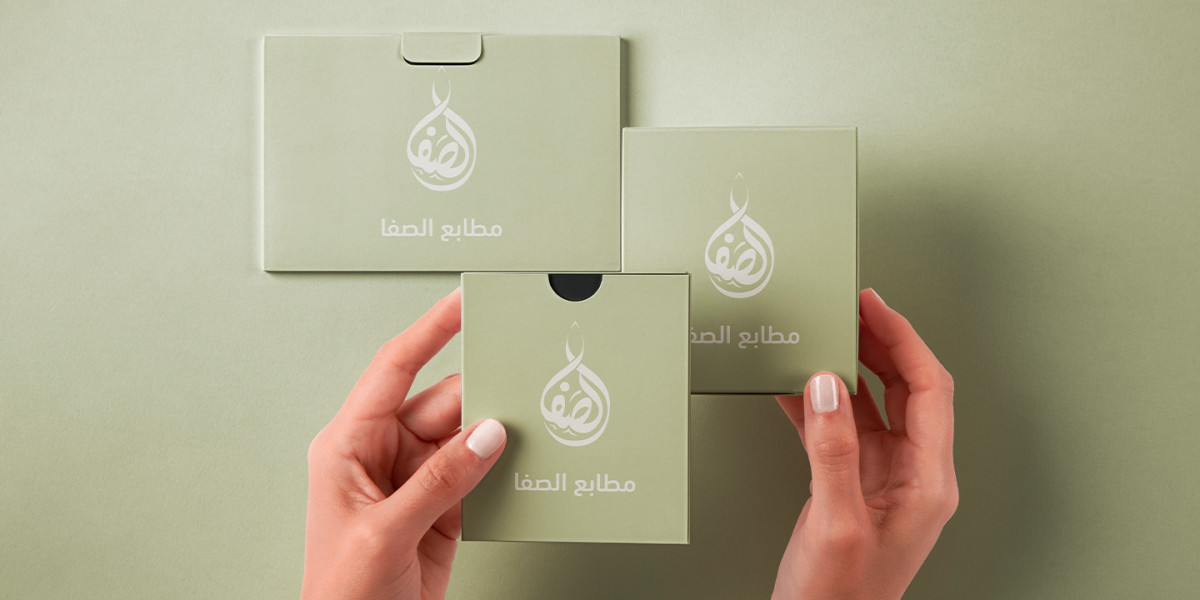In today’s competitive market, how your brand is perceived can be significantly influenced by the quality and creativity of your printed materials. Custom printing is an effective way to make your brand stand out, whether you’re designing promotional materials, packaging, business stationery, or other branded collateral.
However, selecting the right custom printing options for your brand requires careful consideration. Al Safa, a trusted name in the printing industry, offers valuable insights into how businesses can choose the best custom printing solutions to elevate their branding and connect with customers in a more meaningful way.
In this guide, we will explore the key factors to consider when selecting custom printing options for your brand, including materials, printing techniques, color choices, finishes, and the importance of consistency across all touchpoints. By the end of this guide, you will have a solid understanding of how to make informed decisions to enhance your brand’s visibility and reputation.
Understand Your Brand Identity
- The first step in selecting the right custom printing options is to fully understand your brand identity. What does your brand stand for? What emotions do you want to evoke in your customers? Whether your brand is luxurious, playful, minimalistic, or eco-conscious, your choice of printing materials and techniques should reflect your core values and aesthetic. Al Safa emphasizes the importance of aligning your printing options with the overall image of your brand.
● Luxury Brands: If your brand is high-end, you’ll want to choose premium printing materials and techniques, such as embossing, foil stamping, or letterpress, which give your printed materials a tactile, upscale feel.
● Eco-friendly Brands: If sustainability is a core value of your brand, opt for eco-friendly printing materials like recycled paper, soy-based inks, and biodegradable packaging. This will resonate with environmentally-conscious customers and reinforce your brand’s commitment to sustainability.
● Playful or Creative Brands: For a more creative or youthful brand, you might opt for bright colors, playful fonts, and unique shapes, using techniques like full-color digital printing or die-cutting for custom shapes.
2. Choose the Right Printing Material
The choice of material is one of the most important factors in custom printing. Different materials convey different messages, and the right one can enhance the overall appeal of your product. Al Safa offers a variety of printing materials that can suit any brand, including paper, cardstock, cardboard, vinyl, fabric, and more.
● Paper: Paper is the most common material for printing brochures, flyers, and business cards. However, the thickness, texture, and finish of the paper can drastically affect the overall look. For instance, matte paper offers a more subtle, sophisticated look, while glossy paper provides vibrant, eye-catching visuals.
● Cardboard and Kraft Paper: For packaging or promotional materials, cardboard and kraft paper are great choices. They are sturdy and provide a natural, earthy look that is ideal for businesses in industries such as food, retail, and eco-friendly products.
● Vinyl: For outdoor signage, banners, or promotional displays, vinyl is a durable material that can withstand various weather conditions. It is also highly customizable and offers vibrant color reproduction.
● Fabric: For event materials, such as banners or custom t-shirts, fabric printing allows for high-quality, long-lasting prints that can give your brand a more dynamic, personalized touch.
3. Select the Right Printing Technique
Once you’ve chosen your material, it’s time to decide on the best printing technique. Al Safa offers a variety of printing methods, each with its unique advantages, depending on the type of material and the final look you’re aiming for.
● Offset Printing: This traditional printing method is ideal for high-volume orders, such as business cards, brochures, and flyers. It offers sharp, high-quality prints and is cost-effective for large runs. Offset printing is also great for achieving consistent color quality and fine details.
● Digital Printing: If you’re printing smaller quantities or need to make last-minute changes, digital printing is the way to go. It is fast, efficient, and allows for more customization, including variable data printing (such as personalized names or addresses on direct mail).
● Screen Printing: Ideal for apparel, promotional items, and textiles, screen printing is a versatile technique that offers vibrant color reproduction and is highly durable. It’s perfect for creating high-impact, long-lasting prints on products like t-shirts, tote bags, and other branded merchandise.
● Foil Stamping and Embossing: For a luxurious and tactile effect, foil stamping adds metallic or holographic accents to printed materials, while embossing creates raised, textured designs. Both techniques work well for packaging, business cards, and stationery, helping your brand make a strong, memorable impression.
● UV Printing: This method uses ultraviolet light to cure the ink, allowing for fast drying and superior quality. UV printing is ideal for printing on non-porous surfaces like plastic, acrylic, and glass. It is often used for custom signage, promotional items, and packaging.
4. Focus on Color Quality and Consistency
Color is one of the most powerful elements of branding. Your brand colors should be reflected accurately in all printed materials to maintain consistency and reinforce brand recognition. Al Safa emphasizes the importance of color management in custom printing, ensuring that your chosen colors are consistent across all marketing materials, from brochures to business cards to packaging.
● Pantone Matching System (PMS): For the most accurate color reproduction, especially for brand colors, Pantone colors are a must. Using the PMS ensures that the exact shade of your brand’s color is matched precisely in all prints.
● CMYK vs. RGB: Keep in mind that print materials use the CMYK (Cyan, Magenta, Yellow, Key/Black) color model, while digital screens use the RGB (Red, Green, Blue) model. When preparing your designs for print, ensure that they are optimized for the CMYK color space to avoid discrepancies in color.
5. Choose the Right Finishes for Impact
The finish of your printed materials can greatly enhance their appeal and quality. Al Safa offers a range of finishes that can help your materials look more polished and sophisticated. The right finish not only adds aesthetic value but also serves functional purposes.
● Matte Finish: A matte finish offers a smooth, non-reflective surface that gives a sophisticated and understated look. It’s ideal for materials like brochures, business cards, and packaging that need to convey a professional and clean aesthetic.
● Gloss Finish: For vibrant colors and a shiny, reflective surface, a gloss finish is perfect. It’s commonly used for brochures, catalogs, and product packaging, making colors pop and attracting attention.
● Spot UV: A spot UV finish involves applying a glossy coating to specific areas of a printed piece, which contrasts beautifully with the matte surface. This effect is great for business cards, invitations, and marketing materials, giving certain elements (like logos or taglines) a premium, highlighted look.
● Textured Finishes: For a tactile experience, textured finishes like linen or soft-touch coating can elevate the feel of your print materials, making them stand out both visually and physically.
6. Consider the Practical Aspects
While aesthetic appeal is important, practicality should not be overlooked. Al Safa advises businesses to think about the functional aspects of their printed materials. Will the material withstand the elements if it’s meant for outdoor use? Is the packaging durable enough to protect your product? Is the print legible and easy to read?
Additionally, consider the quantity of prints required, your budget, and the timeline for production. Al Safa offers flexible solutions to accommodate both small and large runs, making it easier for businesses to scale up or down based on their needs.
Conclusion
Selecting the right custom printing options for your brand can significantly impact how your business is perceived by customers and potential clients. By aligning your printing choices with your brand’s identity, choosing high-quality materials and finishes, and leveraging advanced printing techniques, you can create lasting impressions that elevate your brand’s visibility and appeal. Whether you are designing business cards, packaging, or promotional materials, the right custom print solutions—guided by the expertise of Al Safa—can help set your brand apart in a crowded marketplace.








